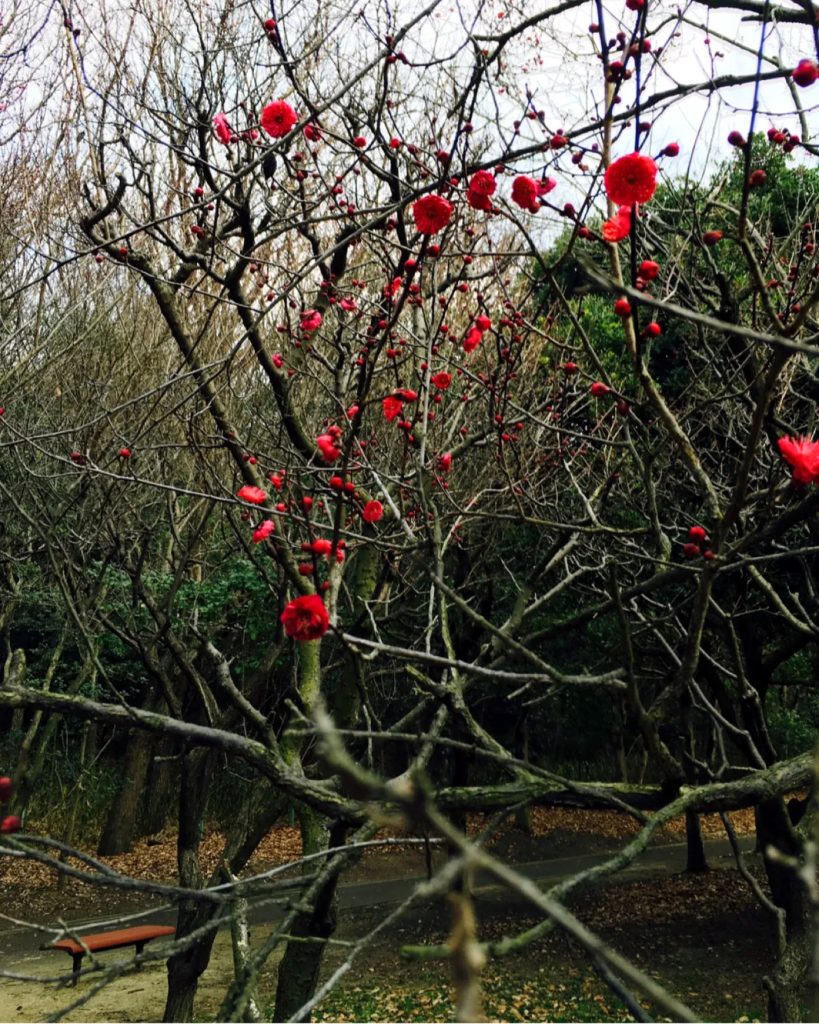
When it comes to flowers, it is often said that plum blossoms were first used during the Manyoshu era, and cherry blossoms were used in the early Heian period. Michizane Sugawara, known for his song “If the East Wind Blows, Make the Smell of Plum Blossoms”, lived in the late 800s, but he also sang songs about cherry blossoms.
A century later, Sei Shonagon, who flourished after Michizane, wrote in The Pillow Book, ‘If it’s a tree flower, I like red plum blossoms, whether dense or sparse. I like cherry blossoms with large petals, deep leaf colors, and slender branches. Wisteria flowers are charming with their supple, long extensions and rich colors.’ Sei Shonagon seems to have a particular fondness for red plum blossoms. While she appreciates cherry blossoms with large petals and deep leaf colors, it implies that during this time, cherry blossoms had small petals and bloomed with leaves. Thus, these cherry blossoms were likely not like the Somei Yoshino variety we see today, but rather mountain cherries.
In any case, it is evident that both Sugawara no Michizane and Sei Shonagon had an interest in both plum and cherry blossoms. However, from this point onwards, cherry blossoms take the spotlight, and interest in plum blossoms diminishes.
花と言えば梅の花を指したのは万葉集の時代で、平安時代初期には桜を指すようになったとよく言われます。「東風吹かば匂いおこせよ梅の花」で知られる菅原道真は800年代後半の人ですが、桜の歌も歌っています。道真の100年後に活躍した清少納言は「木の花は、濃きも薄きも紅梅。桜は花びらおほきに、葉の色濃きが、枝ほそくて咲きたる。藤の花は、しなひながく、色濃く咲きたる、いとめでたし。」と枕草子に書いています。紅梅がとてもお気に入りの様です。桜は花びらの大きいのが良いが、葉の色が濃いのも良いとも言っています。裏を返せば、この頃の桜は花びらが小さく、葉と共に咲くと言っていますから、この桜は、今の様なソメイヨシノではなく山桜です。いずれにしろ、菅原道真も清少納言も、梅にも桜にも関心を持っている事が分かります。これ以降はもっぱら桜が主役で、梅への関心は少なくなります。
